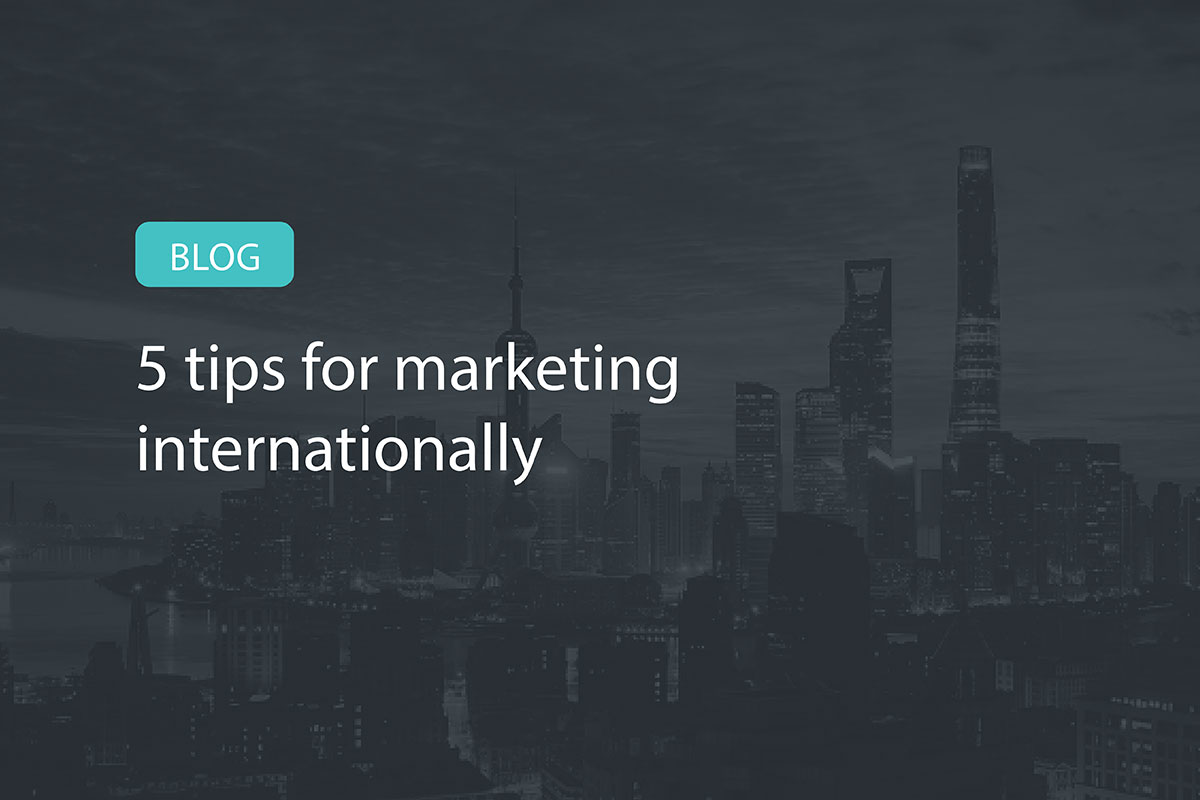At the heart of all marketing is communication. And this can be difficult enough when you share a language and culture, so it presents a real challenge when your remit includes marketing internationally. Of course, there’s the obvious language barriers, however you also need to address what it means to market to people with different social behaviour, norms and experiences.
When I worked in global marketing roles, it was exciting. I enjoyed the challenge of pushing myself outside of my comfort zone. I enjoyed learning about different cultures, what worked, what didn’t. So, for this blog, I thought it was worth sharing some of my key learnings, which might help you in your international marketing efforts.
1. Revise your strategy
I’d love to say it’s as simple as translating your website, but it isn’t. You need to do your research to fully identify the many cultural nuances that will inform your go-to-market strategy.
Firstly, don’t be daunted – going global doesn’t require you to start entirely from scratch, but it is essential that you rework your marketing strategy to really fit your new market. Unfortunately, I’d love to say it’s as simple as translating your website, but it isn’t. You need to do your research to fully identify the many cultural nuances that will inform your go-to-market strategy.
Focus your efforts on developing a true understanding and appreciation of the differences in industrial, economic and technological levels, capabilities and skills, languages, values and aesthetics; differences in business practices and the varying levels of competitive intensity.
2. Think local
When building an international marketing strategy, it’s important to reflect on local considerations. It can be easy to get swept up with the bigger picture of your global marketing plan, but without paying proper attention to the local audience’s wants and needs your campaign is destined to fall on its face (look to eBay’s entry into China in 2004 as an example).
Working with local partners such as distributors, licensees or agents can help you build local knowledge and carve out a space in an unfamiliar market. In my experience, securing these local business partners on the ground can prove invaluable – they can ensure your marketing assets have local appeal as well as keeping a close eye on your competition.
I fully expect that you create a lot of content, be it white papers, blog posts, videos or podcasts. You may wish to invest in the translation and localisation of this content, or if budgets allow you may consider transcreation – the creation of entirely new content for a particular region. ‘Global’ content marketing can grow your firm to the next level, it can add credibility in a new market, as long as you use the right channels and understand the importance of adapting content for your new regional market.
Marketing channels will vary from territory to territory, and as you can see from the eBay example above, getting it right is essential. Whereas media coverage and in-person events work well in Dubai, evidence suggests that case studies are more effective at getting messages across in a country like France. In terms of digital marketing, the top social media platforms in the UK may be Linkedin, Twitter, Instagram and Facebook, but in China it’s WeChat, in Germany they use Xing as its social business networking platform of choice. If these platforms are brand new to you then there is work to be done, as you will have to conduct research and understand how they work before launching your strategy. Remember, your local competitors will already have this knowledge, so this is where getting things right the first time is important, both for your brand and importantly, your budget.
3. Don’t get lost in translation
As we’ve mentioned, translating ideas is more than just popping your website into Google translate. Countless top brands have made this mistake, including KFC whose famous slogan “finger-lickin’ good” was mistakenly translated to “We’ll eat your fingers off” when they launched in China! Needless to say, the embarrassment and significant cost to pulling and re-releasing a campaign should give adequate reasoning to consult with local translators to support the creation of your campaign.
In addition to getting the language right, it’s essential your firm can understand the local ways business is conducted. Whereas you may be used to working with senior management and sales directors in the UK, decision-makers in the Middle East can be independent distributors who act as agents for larger companies. This could have an impact on your regional strategy – do these independent contractors have the same motivations and frustrations as the managers you are used to selling to?
You also need to observe local cultures, traditions and religions, an area where numerous companies have accidentally caused huge offence. An embarrassing example in the B2C world that we can all learn from is Tesco, who displayed Smokey Bacon Pringles in a London store in 2018, arranged below a white crescent and the words ‘Ramadan Mubarak’. The campaign failed on 2 counts – Islamic dietary codes classify all pork, including bacon, as forbidden to devout Muslims, also, Ramadan requires fasting during the day, so the promotion of a food product during this time was hugely misjudged, and caused offense to many Muslims.
4. Don’t rely on Google
We’re prone to think that Google dominates all global markets, and while it is the number one search engine in most countries and territories, there are other key players.
We’re prone to think that Google dominates all global markets, and while it is the number one search engine in most countries and territories, there are other key players. In Russia, the market leader is Yandex, and in China it’s Baidu. You may also find in some markets that Google is so saturated it’s a smarter option to run paid advertising with Bing, for example.
Spending time understanding which search engines are used where will help you when planning your digital strategy and getting a handle on international SEO.
Global search engine marketing is a combination of understanding keywords and choosing the correct search engines. Don’t simply translate your keywords into your new market’s language, instead work with native speakers to decide which are the most appropriate.
5. Design can get lost in translation too
When designing your website and marketing materials for a new market, you must consider the length of words in your target market. For example, in Germany words are often long, and sentence structures are very specific, otherwise they don’t make sense, so this needs to be factored into your design considerations. Font choice can also trip people up – many fonts don’t support all characters, and some have negative connotations in certain parts of the world.
I’ve always found Asian websites often seem much busier than here in Europe, and equally your UK site might seem sparse to an Asian client. It’s important to be aware of these preferences when designing an international focused website.
Research your local competitors to get a sense of style in your target market – for example I’ve always found Asian websites often seem much busier than here in Europe, and equally your UK site might seem sparse to an Asian client. It’s important to be aware of these preferences when designing an international focused website.
Finally, I suspect imagery forms a key part of your messaging, and it’s essential that photos on your website and in your marketing materials speak to your local market. Your target market must be able to identify with them, and so they must reflect your localised core messages.
Going global
In conclusion, please remember that one size doesn’t fit all and local collaboration is essential. Although there might seem like a lot to consider, preparation is key. Good luck, and if you need more advice please don’t hesitate to get in touch.

